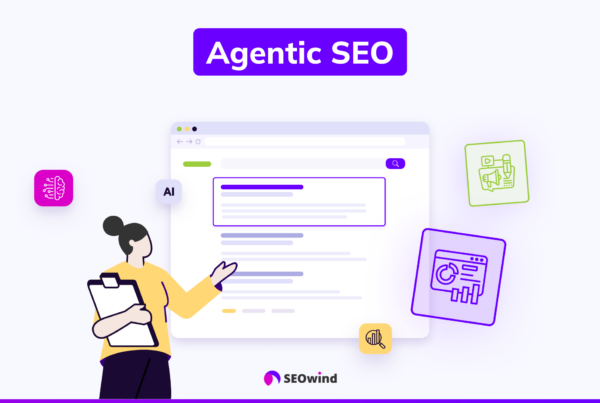It’s time we embark upon a significant journey: delving deep into the nuances of website visibility, reviewing the world of search engine comprehension, and aiding navigation through Google’s algorithm labyrinth. Brace yourself as we traverse the vast landscape of keyword optimization, unveiling its underlying principles, pivotal importance, tangible benefits, and top-notch strategies that can transform your website’s fate.
What is Keyword Optimization?
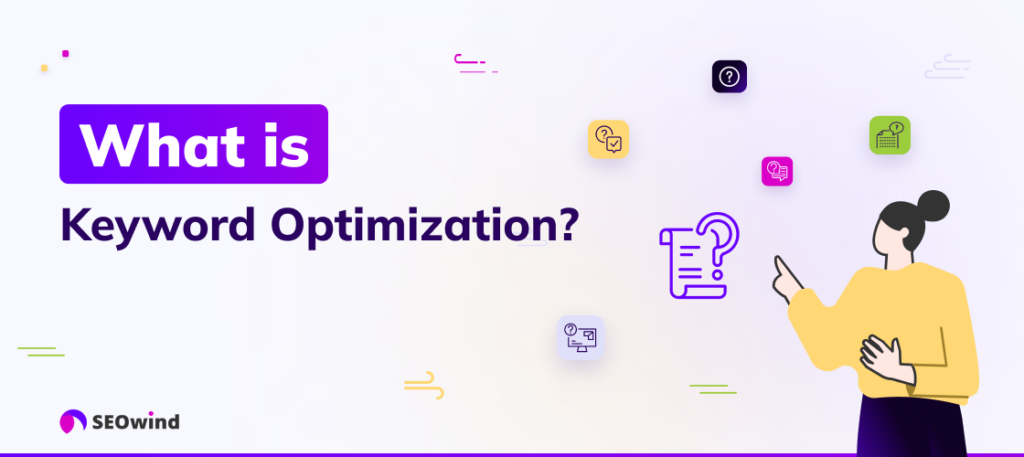
Keyword optimization, sometimes referred to as ‘keyword selection’ or ‘keyword research,’ is an essential aspect of Search Engine Optimization (SEO). But what exactly does this terminology imply?
Simply put, keyword optimization encompasses identifying and employing effective keywords or phrases in your website content that potential customers or clients will likely use when using search engines like Google. These keywords play an instrumental role in heightening the visibility of your webpage on search engine results pages (SERPs) and steering relevant internet traffic towards your site.
Yet, keyword optimization isn’t just about peppering your content with popular search terms; it goes miles beyond. It requires careful deliberation when choosing keywords that resonate with users’ search intent while ensuring optimum alignment between user inquiries and your offering. Whether you have an informative blog post to share or a product page driving conversions, executing strategic keyword optimization can work wonders.
In essence, keyword optimization enhances discoverability and furnishes cogent pathways that guide genuine suitors right to your doorstep!
Why is Keyword Optimization Important?
Keyword optimization is a vital part of Search Engine Optimization (SEO) and plays a crucial role in improving website visibility. By incorporating the right keywords, your content becomes more accessible to users who search for specific terms relevant to the information on your site.
This process goes hand-in-hand with improving search engine rankings. Major search engines like Google use keyword relevance as one of their primary ranking factors, meaning that well-optimized sites are more likely to appear higher in search results. Achieving a high ranking can significantly increase traffic to your site, thereby augmenting potential lead-conversion rates.
Primarily targeting niche-specific words can help your content stand out amid an ocean of competing pages. This makes the appropriate choice and usage of keywords essential. Neglecting this aspect may mean missed opportunities for exposure and customer engagement.
What Are The Benefits of Keyword Optimization?
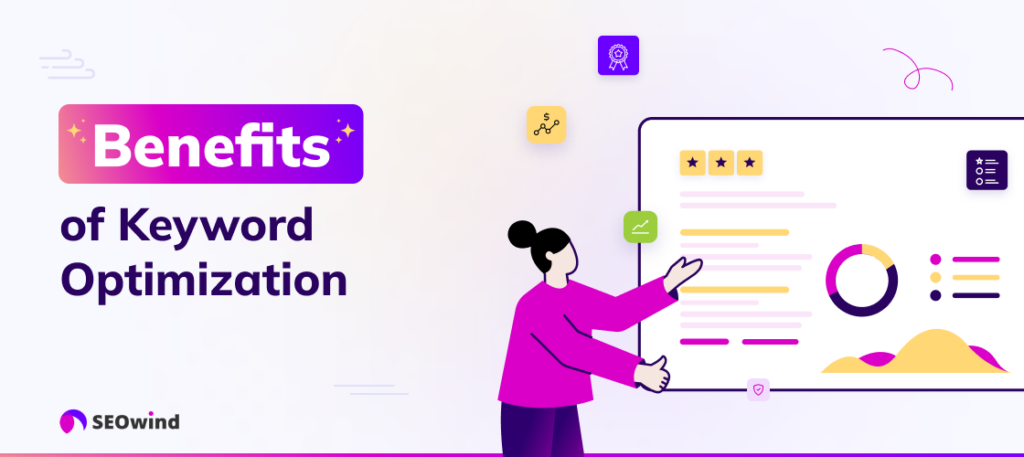
Optimizing your content effectively through the strategic use of keywords has numerous benefits:
- Improved website ranking: Optimized websites rank better on SERPs, leading to increased visitors.
- Increased visibility and traffic: A high ranking improves page visibility and organic traffic.
- Better user experience: Contextually sound usage of keywords enhances reader engagement and creates a refined user experience.
- Higher conversion rate: Targeted keywords attract visitors with high-conversion potential, boosting sales or lead generation efforts.
- Competitive Edge: Using less competitive yet popular phrases associated with your brand or service gives you an advantage over competitors by capturing unique market segments.
Remember that while SEO caters to search algorithms, the final beneficiaries are always human users looking for relevant, easy-to-read content that instantly addresses their needs or queries. So, it’s pivotal to strike a balance between optimizing for machine-based evaluation criteria and human browsing habits. This achieves holistic keyword optimization success unmatched by any conventional SEO methods alone!
What is an example of keyword optimization?
To succinctly grasp the concept, let’s delve into a practical illustration of keyword optimization. Assume you’re running a website that sells organic skincare products. You’ve just launched a new product – an “Organic Charcoal Face Wash” – and want the world to know about it.
- The first step in your journey would be to pin down a list of relevant keywords connected to your product, such as ‘organic face wash,’ ‘charcoal face cleanser,’ ‘best charcoal facial cleanser,’ and so forth.
- Next, research these potential keywords using an SEO tool such as Google Keyword Planner or SEMrush to verify their search traffic and competition levels.
- Once you’ve chosen keywords, embed them naturally into vital places on your page, such as title tags, URLs, meta descriptions, H1 tags, content, image file names, and alt text.
Putting all this together might result in:
- URL: www.yourwebsite.com/organic-charcoal-face-wash
- Title Tag/H1: Best Organic Charcoal Face Wash for Deep Cleansing
- Meta Description: Discover the power of our all-natural ingredient – the best charcoal facial cleanser that detoxifies without over-drying your skin.
- First Image Alt Text: Woman washing face with Organic Charcoal Face Wash.
Simultaneously, weaving these targeted words throughout meaningful content helps search engines understand your page better and leads potential customers to your doorstep! This process of aligning website elements with selected keywords is what we call “keyword optimization.”
How to do keyword optimization? 3-step approach
Step 1. Make sure you’re optimizing for the right keyword
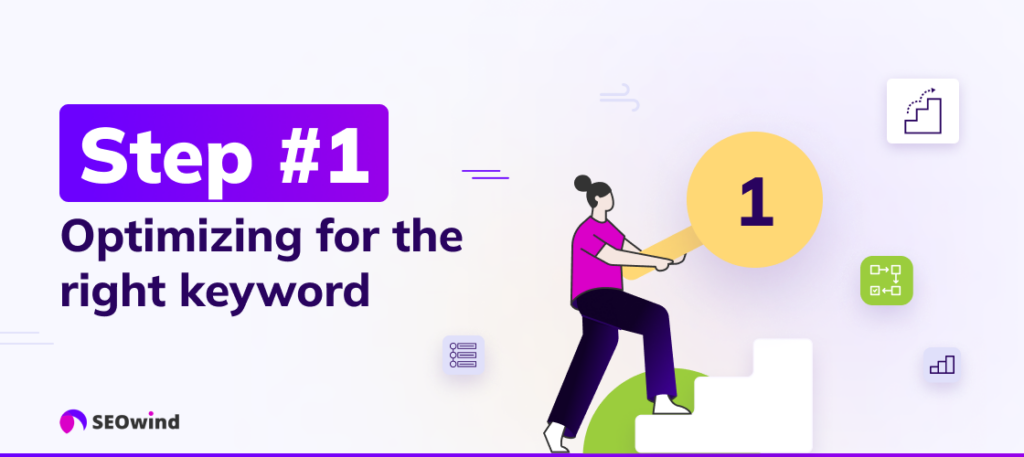
Keyword optimization is like a treasure hunt; it’s all about finding the right words to generate the desired visibility on search engines. To succeed, let’s start with step one: ensuring we’re optimizing for the ideal keyword.
Audit Your Current On-Page SEO
To begin with, perform an audit of your current on-page SEO. Uncover how your website or blog post is currently optimized and take note of areas in which improvements can be enforced. Utilizing tools like Moz or SEMRush can come in handy when assessing current optimization efforts.
Remember to:
- Explore how you use keywords in critical zones such as page titles, meta descriptions, H1 & H2 tags, and Image alt text, among others.
- Ascertain if your content matches the user intent tied to your chosen keywords.
Research Search Traffic Potential
Once completed, investigate the potential of search traffic associated with various keywords. Tools like Google’s Keyword Planner or Ahrefs help find this invaluable data.
Here are some elements to consider:
- Average monthly searches show how often a keyword gets searched on Google.
- The trends graph illustrates fluctuations in the term’s popularity.
Verify the Value for Your Website
This goes beyond generating traffic traffic. In fact, value mostly comes in the form of quality visitors making positive actions on your site (sign-ups, purchases, et cetera). Recognize how these terms line up with what you offer and whether they attract relevant audiences who would genuinely be interested in your digital content.
Don’t Forget Your Target Audience
The focus should always remain on those valuable individuals that compose your target audience. Delve into their behavior patterns:
- What phrases do they utilize while searching?
- In which context do they generally employ these phrases?
Strive for an aligned match between their mindset and your selected keyword.
Check Keyword Difficulty
Utilize SEO tools effectively when determining ‘keyword difficulty.’ This metric helps determine how challenging it could be to rank highly in SERPs under any specified term.
Check Search Intent
Be sure to explore why someone might use precise terminology when searching. Does the user want to learn? Or are they looking to purchase something? Determining customer intention makes developing corresponding content strategies around keyword optimization techniques easier.
Use Your Expertise
Put forth all these insights in combination with industry knowledge and the intuition developed during your time as a marketer to make confident decisions regarding the selection of suitable keywords.
Every step taken towards understanding the optimization of keywords for SEO provides growth opportunities. Even getting marginally better may ultimately result in indispensable conversions amidst today’s fierce online competition!
Step 2. Align with Search Intent
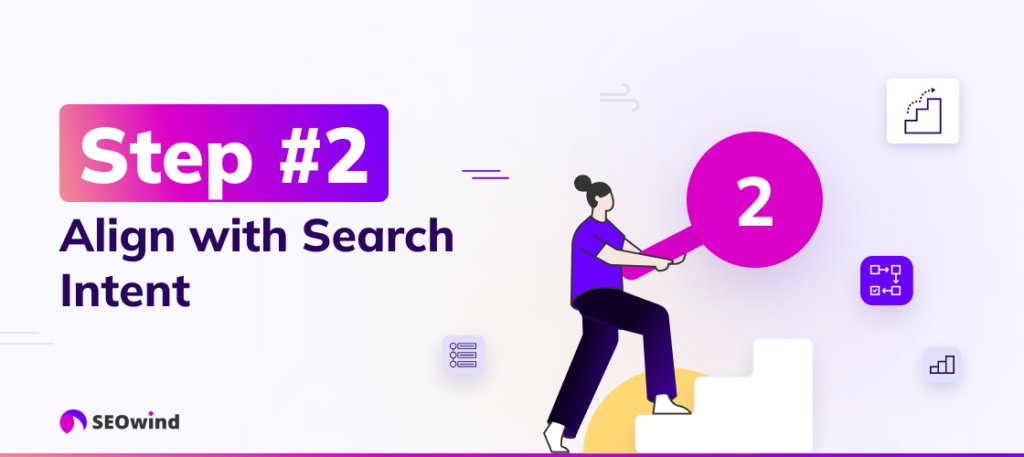
To ensure you reap the benefits of keyword optimization, it’s critical to understand and align your tactics with users’ search intent.
Map Your Keywords to the Buying Journey
One proven method for effective alignment is mapping keywords to different stages in the buying journey of a potential customer.
Awareness Stage
Early in their journey, customers recognize they have a problem but may not know what solutions exist. Keywords used in this stage are typically broader terms focused on ease of understanding. A searcher might use phrases like “how to optimize keywords for SEO.” Inserting these into your content lets you capture early interest and potentially guide visitors toward later stages.
Consideration Stage
During consideration, potential customers compare different approaches or brands that offer a solution to their problem. More specific keywords come into play here as consumers dig deeper into product features or strategies. For instance, ‘Google keyword optimization,’ ‘optimize SEO,’ or ‘definition of search engine optimization.’ SEO-optimized content at this stage can prove very attention-grabbing.
Decision Stage
This is when consumers decide which brand’s solution they’ll choose. High-intent keywords such as ‘keyword 3’ plus an action word like ‘buy,’ ‘purchase,’ or ‘trial’ prevail as they indicate readiness for conversion.
Content Type
Optimizing through content types can be highly fruitful. You have to choose between blog posts, infographics, videos, podcasts, and ebooks based on what makes the most sense for your chosen keyword and the needs of your target audience.
For instance, if someone is looking up ‘how-to SEO optimization,’ creating informative blog posts might work better than just descriptive product listings.
Content Format
Similar but subtly different from content types, content format optimizations involve being deliberate about how information is structured within chosen formats. This could mean picking between step-by-step guides, listicles, long-form essays, et cetera. Regardless of your final selection, the decision should be informed by consumer preferences that surface during the research phase.
Content Angle
Lastly, while deciding your strategy around keyword optimization definition or any other aspect, being unique – such as adopting a unique angle – becomes crucial. Remember that you are targeting the same consumers as multiple other brands. By leveraging analytics-based insights, you can drive better connections and give yourself better odds of completing conversions and building loyalty over time.
Step 3. Follow On-Page SEO Best Practices
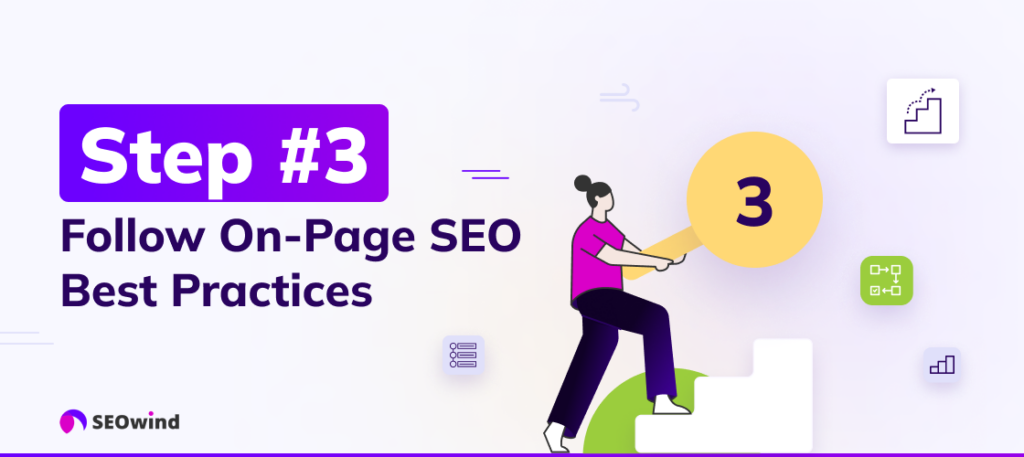
Use a Keyword Optimization Checklist to Build Your Lists
Having a checklist at your disposal as part of the search engine optimization process is beneficial for effective keyword optimization. This valuable tool will guide you in optimizing keywords and ensuring they align with essential metrics such as relevance, traffic potential, and competitiveness. Key factors to include are:
- Recognition of the most relevant keywords.
- A research-based understanding of keyword optimization.
- Gauging the competence of the keyword landscape by analyzing search engine-optimized keywords.
- Examining the rising or falling trends for desired terms.
Pay Attention to Mobile Keywords
In our increasingly mobile world, optimizing your site for search engines on handheld devices is essential. Mobile browsing has surpassed desktop usage, meaning SEO must be geared towards this medium to build an effective web presence. As such, mobile-specific keywords require particular emphasis in any meaningful SEO strategy. Indeed, the linguistic choices made by users can vary depending on their device.
Give Readers What They Want
Quality content tailored to your readers’ needs helps improve page rankings and boost organic traffic. Therefore, it’s crucial to emphasize delivering what readers genuinely desire when choosing keywords. This directly influences Google’s algorithms, which prioritize searcher intent satisfaction over content stuffed with keywords. Optimize SEO by curating information that responds effectively to specific queries within your website topic niche.
Make Your Content Easy To Digest
Making your curated content easy to navigate and comprehend is also essential. Present complex ideas plainly without forfeiting authoritative insights. Go beyond superficial, meandering explanations while avoiding jargon-thick text blocks that intimidate more than instruct.
Aid readability by employing headers (H2–H6), bullet points where appropriate, and highlighting salient takeaways via strategic bolding or distinct quotes panels. This ensures even idle scanners catch pertinent bits of information—a vital aspect connected to a well-thought-out internet SEO approach.
Optimize Page Title
The title tag plays a critical role in impacting both SERP visibility and Click Through Rates (CTR). Ensure every title integrates targeted search engine optimization keywords to reflect the overall message capably while staying under 70 characters. This ensures the full title is displayed across all search platforms, including Google.
Consider crafting compact titles compactly, given these constraints require tactful use of primary keywords. Preferably, these would be placed towards the beginning and amalgamated with secondary terms to generate engaging yet descriptively concise header lines.
Match The H1 Tag With The Title Tag
Making your H1 tag match the title significantly enhances consistency between visitor expectations when they navigate to the actual page. This creates positive user experiences and reinforces accurate messaging while harmonizing better with keyword optimization techniques. In addition, this practice bolsters enhanced positioning during crawls because search engines appreciate such alignment. Finally, this harmony facilitates a greater understanding of the core subject matter.
Create a User-Friendly URL
Always remember that using concise, straightforward, and simple URLs affects the visibility of your website. For optimized search engine results, opt for short, user-friendly URLs that are enriched with primary keywords to achieve maximum potential.
- Keep it short: Don’t go over four or five words.
- Ensure readability: Make sure humans understand it too—think “sane” over “random.”
- Add keywords: If possible, weave in your target keyword (but don’t stress about it).
Remember, clarity takes precedence when choosing a URL. Like a book spine within a library catalog, simple URLs make sites easier to discover.
Optimize Images (filenames and alt tags)
Keywords are not limited to the text within your content. They extend to image file names — another great asset for boosting keyword status. Also known as alt tags, they play a fundamental role in clarifying image contents that search engines might struggle to decipher, effectively optimizing those images. Always be sure to:
- Use apparent file names that describe what’s shown.
- Add alternate attributes with relevant descriptions (sprinkle in your primary keyword where natural).
Your goal is twofold: make these images useful for individuals who use screen readers and provide relevant metadata to search engine crawlers.
Link to Relevant Internal and External Resources
Another critical strategy is ensuring high-quality links are peppered throughout your site content. This is fantastic for massively improving visitors’ perceived value and encouraging longer dwelling periods.
- Internal links connect different posts or pages within your site.
- External links point from your content towards other authoritative sites in related fields.
Each approach focuses on crafting an interconnected web structure, leading users closer to conversion while exhibiting subject matter expertise through external references.
Optimize for Featured Snippets
Securing Google’s “Position Zero” represents an advanced level of keyword optimization that enhances your visible presence amidst crowded search outcomes.
This requires formatting clear answers, solutions, and definitions in paragraphs, bulleted lists, or tables that directly pertain to user queries. Get straight to the point without fluff!
These textbox highlights act as click magnets, drawing eyes instantly upon page load.
Optimize for Rich Results
When you seek rich results or SERP features, you enhance audience engagement by standing out from traditional blue links. In addition, make sure crucial information is indisputable, such as:
- Product reviews/star ratings
- Recipe cooking times
- Event specifics.
These visual augmentations work wonders by attracting higher traffic rates and driving CTR through customer-enticing aesthetics!
Don’t Underestimate Long-Tail Keywords
Lastly, never underestimate the power of long-tail keywords! These phrase gems often dismiss competition levels, making it easier to achieve first-place rankings and yield excellent traffic volumes.
Due to their specific nature, long-tail keywords may not attract many visitors. Still, they can draw a more focused audience. This can lead to a higher interaction and conversion likelihood than more generic terms.
Best Practices for Keyword Optimization

In an increasingly competitive digital landscape, employing the most effective strategies in keyword optimization is essential. With countless websites battling for attention from search engine algorithms, achieving visibility and improved rankings hinges on more than merely using keywords. To this end, there are certain best practices each content marketer must keep in mind.
Avoid keyword stuffing
A cardinal rule in keyword optimization is to beware of overusing your chosen keywords – a malpractice known as ‘keyword stuffing.’ A couple of decades ago, the excessive use of targeted keywords might have tricked primitive search engines into granting higher rankings. However, contemporary search engine algorithms like Google’s Penguin update are sophisticated entities that penalize such tactics.
Furthermore, the overuse of specific phrases can erode the user experience. Content readability suffers when sentences are awkwardly packed with repetitive word strings or expressions. Always remember that while you need to please search engine bots with optimized keywords, it’s ultimately real people whose engagement matters more for your brand reputation.
Use natural language
To optimize SEO without turning off your audience, aim to naturally infuse your writing with relevant keywords. This approach aligns well with search engines’ increasing adoption of semantic search technology, wherein context and user intent get significant weightage along with exact keyword matches. How folks genuinely talk about a topic may not always echo industry jargon or finely-tuned marketing copy. So, conversational phrasing should be factored into your SEO strategy.
A winning formula involves creating high-quality, helpful content in which meaningful conversations guide the use of target words rather than structured insertion at arbitrary intervals. In this way, you ensure that human users remain at the heart of your efforts.
Include related keywords
Finally, another proven tactic focuses on incorporating semantically related keywords into your content. Search engines today understand synonyms and thematically similar words thanks to technologies like Latent Semantic Indexing (LSI). Throwing in additional relevant terms expands upon your primary keyword’s concept, providing depth and richness to the information presented.
This practice offers two primary advantages. It assists Google crawlers in grasping context and satisfies diverse user queries through varied phrasing or different aspects explored around central topics. As you invest time researching robust sets of associated words for website keyword optimization, bear in mind these ought to flow seamlessly inside engaging narratives that gratify reader curiosity.
By adhering faithfully to these best practices, fostering authenticity, and relevance, you can ensure optimal key term usage relies on integrated techniques to master SEO strategy.


